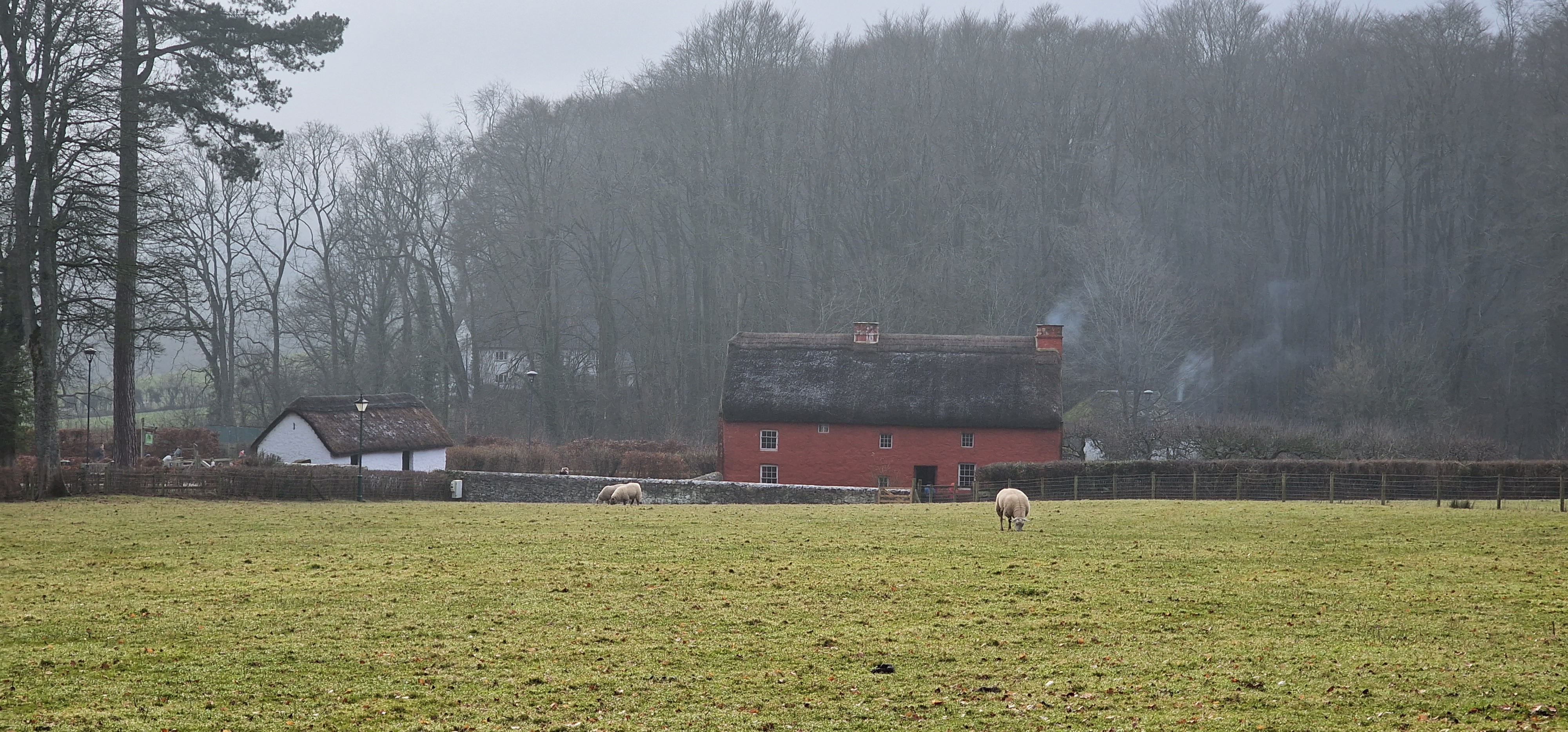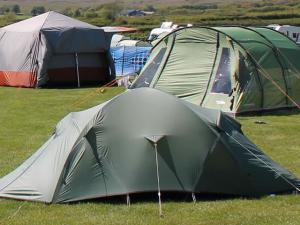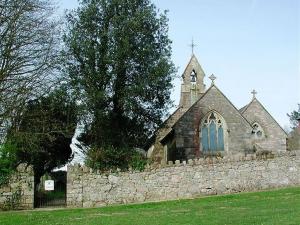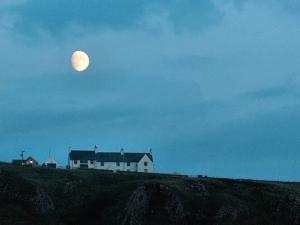The present-day farmhouse located on Kennexstone Camping and Caravan Park was built in 1939. The original farmhouse, however, dated from 1610 and is now on display at St. Fagan's Museum of Welsh Life. This earlier farmhouse, which is a fine example of the old Welsh Long House style of building, originally consisted of just a small parlour and a loft room. The farm must have been turning a nice profit, however, as later in the century a living room was added to the farmhouse and a back kitchen constructed on to the property later again, probably around 1750. This late addition explains the uncommon presence of two open hearths in the house - one in kitchen and the other in the parlour.
Thanks to grant assistance from the Welsh Committee of the Festival of Britain in 1951, St. Fagan's Museum of Welsh Life was able to afford a new addition to its growing stock of historic buildings. The property they decided upon was Kennexstone Farmhouse. The building itself was kindly donated by the owner of Kennexstone Farm, Mr. J. B. Rogers, and the entire funding was able to be spent on the painstaking task of removing the building, brick by brick, from the Llangennith farm on which it had stood for over three centuries and the precise reconstruction of the farmhouse in Cardiff. By 1955, Kennexstone Farmhouse had been re-erected at its new home at St. Fagan's Museum of Welsh Life and stocked with both original furniture from the farmhouse and other traditional items from around South Wales. The property now forms what has to be seen as the centre piece of the open air museum and is preserved there, complete with an exact replica of its original garden, amongst other historic treasures from around the whole of Wales.
There are several curious aspects of interest to those visiting the original Kennexstone Farmhouse building today. The most outstanding of these is the bright red colour of the farmhouse. Originally, such red colouring was comprised of a mix of limewash and ox blood. By painting the outside walls of the farmhouse red*, it was believed that the building would not only be protected from evil spirits but that it would exorcise any that were already present within the house. This gives a very interesting insight into the belief systems of the people of this period. Other charms present here to protect the household from evil include the Rowan Tree planted in the garden - whose red berries were seen as protection against evil - and several carved figures near the inside front door of the farmhouse.
Kennexstone Farmhouse is open to the public and presents a fascinating opportunity to see how its early inhabitants lived. The first thing noticed upon entering the farmhouse is the intense gloom. Even on the balmiest of summer afternoons, the building's 17th Century windows can do little but add a spooky glint to the ancient furniture which decorates its interior. It is not unusual to feel a little uneasy as you wander around the farmhouse. All the windows are small and the dusky stillness of the rooms and the antiquated furniture that decorates the farmhouse all give the house a rather scary ambience. A crackling fire, watched over dutifully by a member of the museum staff, raises the subtlest of dancing shadows as you enter the first room of the house but, like the ancient windows, offers little in the way of illumination in the building.
Of interest amongst the period furniture in the house is the large box bed - this was a feature of most Gower houses of the time and is one of the few pieces of furniture originally belonging to Kennexstone that still resides in the farmhouse. Other furniture retained in the cottage from its early time in Llangennith include the old benches and bacon cupboard chair which reside in the front room of Kennexstone. Most of the furniture now on display in Kennexstone Farmhouse, however, originated from the Glen George Collection and can be traced geographically to Glamorgan and Carmarthen. Typical of farmhouses of a similar date is the raised area above the fire place. This was for the smoking of meat and its construction forms a cosy sleeping platform in the room above. Again typical of Gower farmhouses of the time, the floor to the building is of mortar construction.
Upstairs, the carved tester bed is draped in a replica of a 17th century vegetable-dyed dornix fabric and the underthatch of the farmhouse's roof implores the fingers to study its intricate neat straw patterns and design. Like the rooms downstairs, most of the furniture upstairs originates not from Kennesxtone Farmhouse itself but from the wider reaches of Glamorgan. They all date appropriately, however.
* At the time the house was donated to St. Fagan's Museum of Welsh Life, Kennexstone Farmhose was actually white in colour. However, during the reconstruction of the property at St. Fagan's, Cardiff, it was noted that there were several layers of paint on the exterior walls of the property. Several of these layers displayed conclusive evidence that Kennexstone Farmhouse had borne the distinct red colouration prescribed by old folklore belief. When the house was opened to the general public in 1955, the farmhouse had once more been limewashed. This wash was to build up a protective coating on the exterior walls only and was purely a temporary measure. By the early 1960's, Kennexstone Farmhouse was returned to its characterful red colour. In recent years, the Rogers family have donated several of the original stone barns to the museum. One of which has now been re-built adjoining the house in Cardiff and there are plans to eventually move and re-build the entire farm yard at the museum.









Availability and Book Online
| Arrival Date | |
| Party Size | |
| Length Of Stay | |















